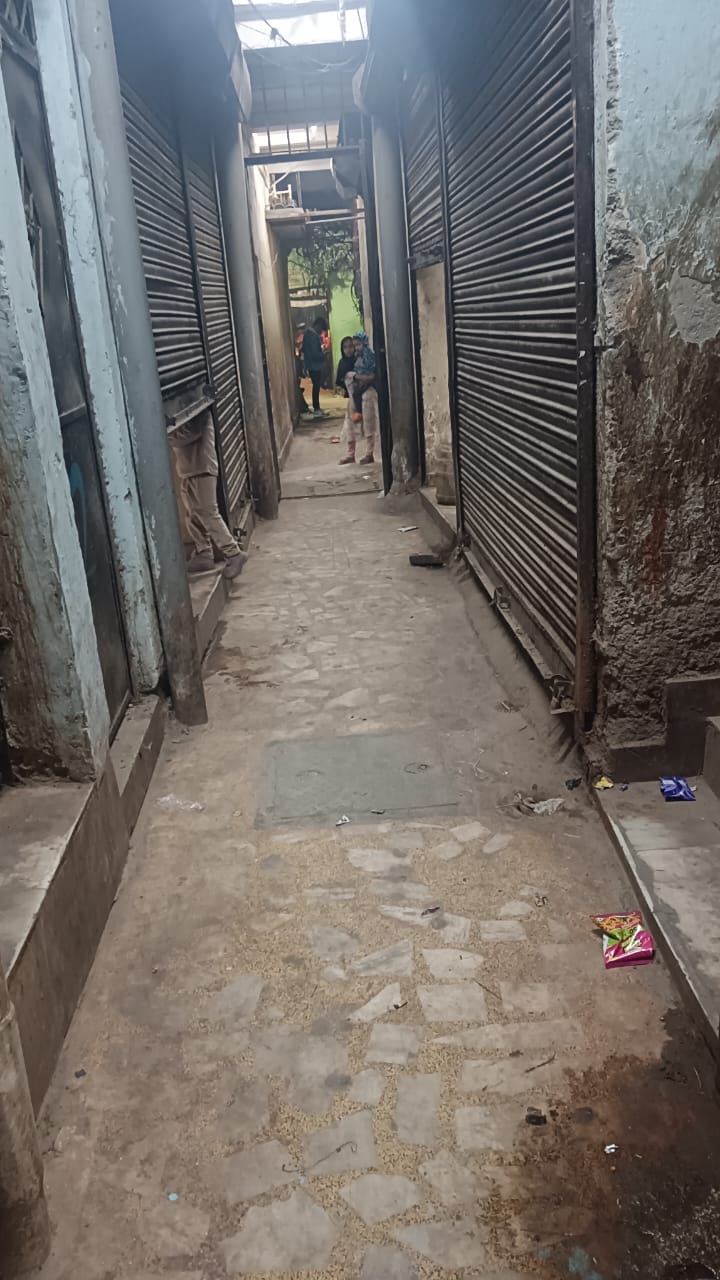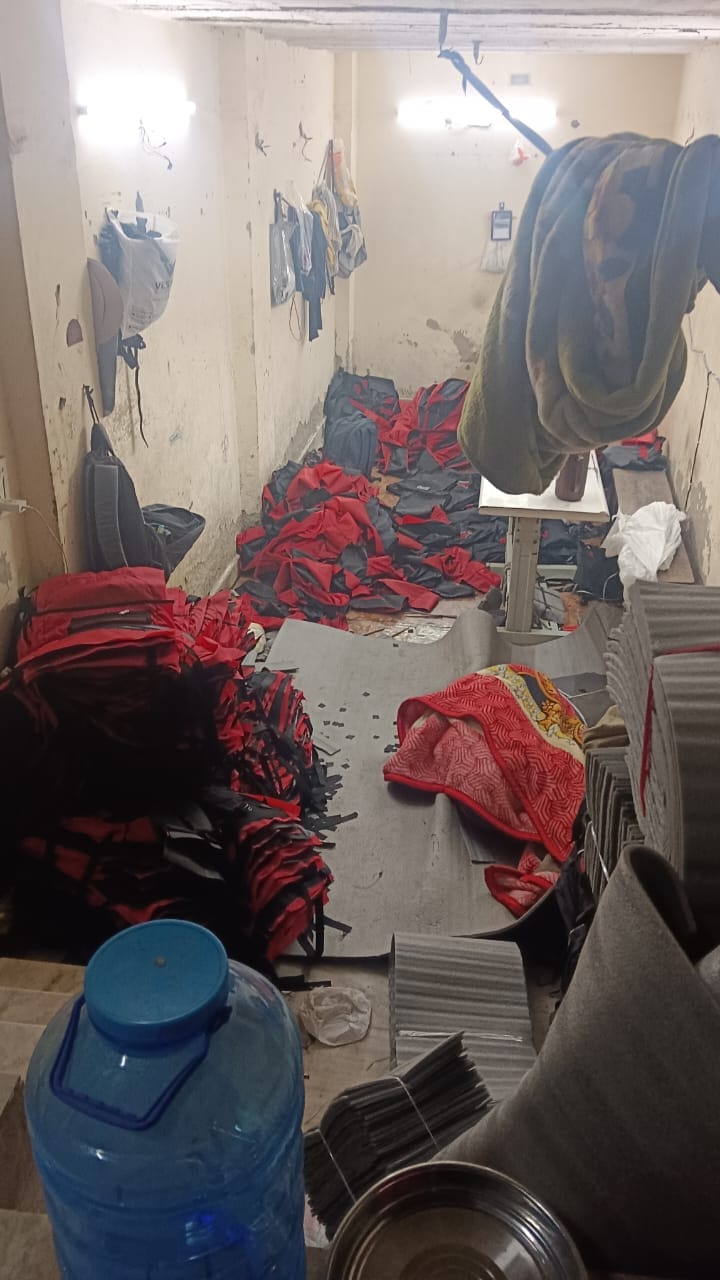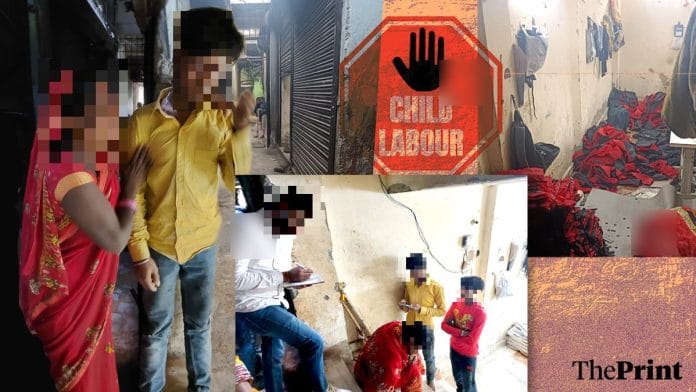New Delhi: The assignment was simple—rescue two minors forced to work as bonded labourers from the narrow, congested lanes of Sadar Bazar. But as Delhi police personnel descended a flight of stairs leading them to a row of windowless basements, they discovered a sinister pattern. At least 10 boys, all minors, scattered across six dingy rooms no bigger than 15×6 feet, toiling away, assembling bags, file folders and hangers.
Delhi police rescued 12 boys that day, including two whose families had turned to authorities for help. The boys were aged between 11 and 15, and hailed from Bihar.
“They lured my child away,” said the mother of an 11-year-old from Sitamarhi who was the first to approach authorities. “When I saw him, I couldn’t help but hug him tightly. I was glad he was fine,” she told ThePrint, her hands trembling.
She had travelled all the way to Delhi, along with the aunt of another boy, in the hope of finding her son and taking him back along with her.
The rescue operation on 3 March led to an FIR later that same day against the owners of seven shops in Sadar Bazar from where the boys were rescued.

Shop owners were booked under section 79 of the Juvenile Justice (Care and Protection of Children) Act, 2000, which penalises those found exploiting a child employee, and sections 3 and 14 of the Child and Adolescent Labour (Prohibition and Regulation) Act, 1986, which prohibit employment of children under 14, and define punishment for violations.
Relevant sections of the Bonded Labour System (Abolition) Act, 1976, however, were not included in the FIR despite an order instructing the same issued by the sub-divisional magistrate (SDM) of Kotwali subdivision in Delhi’s Central district. ThePrint has accessed a copy of the order.
Only two of the boys, whose families had approached the authorities, were issued release certificates by the SDM. These certificates serve as official documents confirming their release from bonded labour and nullifying all agreements with their employers.
Investigating officer (IO) Deepak told ThePrint that “sections mentioned in the FIR are sufficient for now, but more relevant sections will be added to the chargesheet if necessary”. He said the police are recording the statements of the boys and a bone ossification test will be conducted in the coming days to determine their exact age.
Police have yet to make any arrests in the case.
‘Kids from our caste don’t study’
“The kids were playing outside while we were at work when the contractor Sadre Alam, who runs a small bag unit in Bihar, met them,” said the mother of the 11-year-old boy from Bihar’s Sitamarhi who first approached the authorities with the help of an activist.
“He (Alam) lured them by promising Rs 12,000 and asked them to come with him. They agreed,” she told ThePrint, adding that the boys left with Alam after he assured them the money owed was sent to their families. But the contractor had lied. According to the mother, someone came to the house and handed her Rs 500. “The person said the kids were working with the contractor and more money would follow,” she recounted.
Both the mother and the aunt of the other boy who accompanied her to Delhi work as domestic help in Sitamarhi. They live on rented land in a kutcha house with a tin roof. Their husbands, construction labourers in Gujarat, send home around Rs 2,000 a month.
The families are Musahars—among the most marginalised caste groups in India, primarily engaged as tenant farmers or daily wage labourers. “Kids from our caste don’t study. We live in a rented land in a mud house, and the owner can throw us out anytime,” said the mother of the 11-year-old boy.
The other boy, aged 15, lived with his aunt after his mother’s demise and has an eight-year-old sister and a father struggling with mental health issues.
Krishna Mohan, the local activist who helped the 11-year-old’s mother write a letter to the district magistrate of Sitamarhi, chalked the situation up to systemic neglect.
“It’s the environment—children enroll in school, see others dropping out, and follow the same pattern,” he told ThePrint.
The boys’ families too were “okay with it at first” since it meant another source of income, said Mohan, “until they learned about the conditions their children were living in, in Delhi.”
A month-long search
It was a phone call from her 11-year-old son on 1 January that alerted the woman from Sitamarhi. “He was crying,” she recalled. “He said they were in serious trouble—the contractor beat them, forced them to work from 4 am till 10 pm, and barely let them sleep. They weren’t paid, only given Rs 1,000 once a week for food; they weren’t allowed to step outside except to get food, and even then, they were constantly watched.”
Her son revealed something even more disturbing. “He said the contractor forced them to drink alcohol.”

Once she heard her son’s ordeal, a sense of panic set in and the woman reached out to Krishna Mohan who took charge and spoke to the boy. “He knew he was in Delhi but had no idea where,” Mohan said, adding that he asked the boy to describe his surroundings. “It wasn’t easy—there were no shops nearby, and the kids were confined to a room. Only one was allowed to step out at a time to buy food and would return immediately.”
Over the next few days, Mohan and his team worked to locate the boy. They caught a break when the boy shared his live location. “Once we had it, we sent staff to verify the area—what kind of place it was, the children’s living conditions, and their statements.”
Since the boys were only allowed to step out briefly, Mohan’s team seized that window to make contact. “We managed to speak to them for a couple of minutes each time. Over time, we gathered their accounts and pieced together their situation.”
The process took nearly a month.
“Only when we were completely certain did we approach the district magistrate,” Mohan said, adding that his team wanted to put together an accurate account of the conditions.
Jurisdiction tangle & release certificates
While the evidence gathered by Mohan and his team did eventually lead to the rescue operation, confusion over jurisdiction led to avoidable delays.
According to Mohan, the district magistrate of Sitamarhi forwarded a letter from the 11-year-old’s mother to the SDM of Karol Bagh subdivision in Delhi’s Central district on 28 January, but there was no immediate action. “We told the Karol Bagh SDM that this (Sadar Bazar) wasn’t their area and requested them to forward the letter to the Kotwali SDM,” said Mohan, adding that Kotwali SDM was seized of the situation only on 6 February.
Meanwhile, the joint labour commissioner at Bihar Bhawan sent a separate letter to the DM of Delhi’s Central district, who forwarded it to the Karol Bagh SDM. “When we followed up on 22 February, we were told once again that the case is under Kotwali. But when we approached Kotwali SDM’s office, they said they hadn’t received any such letter,” said Mohan.
It was only on 26 February that Mohan managed to speak directly to the Kotwali SDM who responded swiftly and assured them that a meeting would be held on 28 of the month with all relevant departments. This meeting paved the way for the rescue operation on 3 March, involving officials from the labour department, personnel from the Sadar Bazar police station and volunteers from the NGOs Bachpan Bachao Andolan and Bal Vikas Dhara.
Once the boys were rescued, police recorded their statements and sent them to a shelter.
The following day, they were counselled by members of the Child Welfare Committee (CWC), and an FIR was lodged at Sadar Bazar police station.
But only two out of the 12 were issued release certificates. Without these certificates, the children remain vulnerable—employers could demand repayment, exploiting their lack of legal awareness. “This is a clear case of bonded labour. They are legally entitled to release certificates,” said an advocate assisting the family of one of the boys.
Originally from Bihar’s Purvi Champaran, Sheohar, Madhubani, and Araria districts, most of these boys were trafficked to Delhi by shop owners from their home districts.
Besides shielding them from coercion, a release certificate ensures access to rehabilitation benefits. Child bonded labourers are eligible for financial aid under the Central Sector Scheme for Rehabilitation of Bonded Labour—an initial Rs 30,000 and a total Rs 2 lakh.
“These funds can support education and prevent re-bondage,” said the advocate, adding that the government has the funds and mechanisms but fails to prioritise these children.
Dr. K. Krishnan, a social scientist and founder of the Released Bonded Labour Associations (RBLA), pointed to the systemic failure in addressing forced labour and migration. “In remote areas of Bihar, Uttar Pradesh, and Odisha, many people lack access to government welfare schemes, including the National Rural Employment Guarantee Act (NREGA) and the Right to Education (RTE) Act, both of which are poorly implemented,” he told ThePrint.
While the labour department is responsible for tracking migration—whether adults or children—there is little coordination between states, he said. Adding, “Accountability is missing. The district vigilance committee, under section 14 of Bonded Labour System (Abolition) Act, and similar bodies under (SCs and STs) Prevention of Atrocities Act, are supposed to conduct inspections every three months, but it rarely happens.”
As for the mother from Sitamarhi, she returned to Bihar after the rescue operation. That same day, two men came to her house asking for her phone number, which she refused to share. The next morning, two women and a man showed up, urging her to drop the complaint against the contractor and accompany them to Delhi to settle the matter. The mother refused and immediately went to the nearest police station seeking protection.
She is now counting the days until her son’s return.
(Edited by Amrtansh Arora)
Also Read: ‘Beatings, burns & confinement’: Parents of Dwarka domestic help narrate 10-year-old’s trauma






